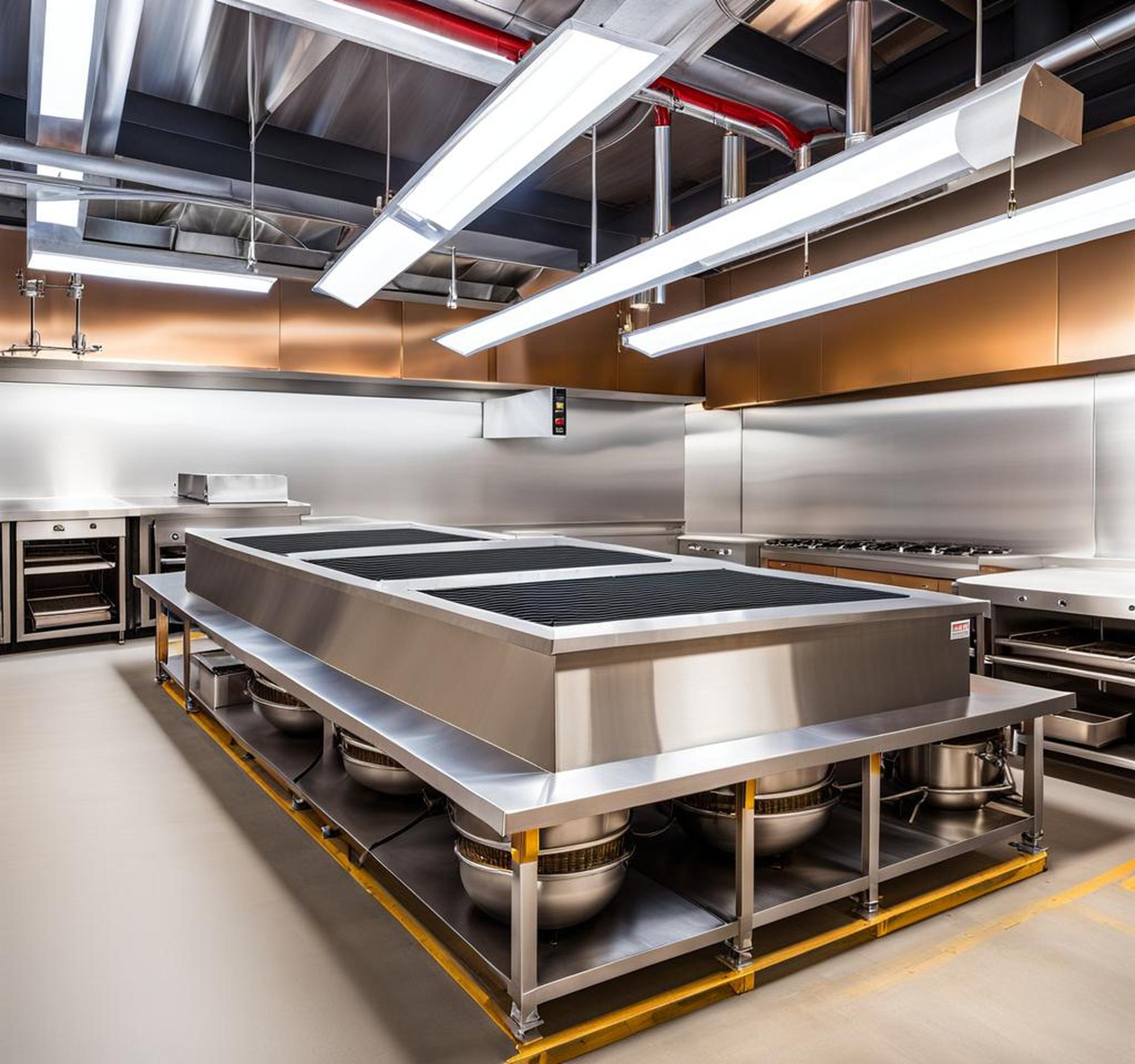Operating a clean and safe commercial kitchen is critical for any restaurateur. One of the most vital systems is the ventilation – specifically, the roof mounted kitchen exhaust fan. While these heavy-duty fans effectively remove smoke, steam, grease and other contaminants from the kitchen, keeping the ductwork properly maintained is also essential.
We’ll also cover best practices to uphold ductwork safety over time.
How Roof Mounted Exhaust Fans Function
Roof mounted kitchen exhaust fans utilize large diameter ductwork to vigorously pull air vertically up from the kitchen hoods and vents. This allows the fan’s high velocity pressure to extract heat, particulate matter, condensation, oils and more.
The contaminated air is then powerfully expelled outdoors via the ducting. So unlike wall-mounted fans that recirculate indoor air, roof mounted systems vent it outside. Durable components like corrosion-resistant housings, motors, and centrifugal fan blades allow these exhaust fans to operate effectively 24/7.
Sizing Ductwork and Fans Appropriately
To work efficiently, roof mounted exhaust fans require properly sized ducting from the hood to the roof vent. Undersized duct diameters lead to restricted airflow and excessive static pressure.

Generally, each 90 degree bend and joint adds static pressure that high-powered fans must overcome. Smoother ductwork enables better flow rates. Straight vertical runs are ideal.
Sealing Ductwork to Contain Grease
While roof mounted exhaust fans reliably handle huge volumes of smoke and vapor, grease poses a safety hazard. As hot oily air moves through the ducts, grease condenses and accumulates along the interior surfaces.
To prevent this viscous buildup, all ductwork joints and seams should be thoroughly sealed with metal foil HVAC tape. This forces the grease to flow back down into the hood grease collectors.
Regular Inspection and Cleaning
Failure to regularly inspect and clean kitchen exhaust ductwork allows thick, sticky grease deposits to accumulate over time.
Restaurant owners should have hoods and ducts professionally steam cleaned every 3 to 6 months. Grease scrapers, pressure washers and degreasers help remove baked-on grease from duct interiors.
Any accumulated grease also poses a severe kitchen fire risk, especially when it hardens. Regular ductwork cleaning maintenance helps avert this danger.
Grease-Rated Ductwork Materials
Another vital aspect is using appropriate duct materials designed to handle grease-laden vapors. Options include various grades of stainless steel or aluminum.
Avoid using flammable products like PVC plastic ducts. Ensure any elbows, joints, hangers and other fittings match the ratings of the primary ductwork.
Maintaining Proper Duct Slope
Sloping ductwork enables free drainage of grease back to the hood or grease receptacle. The optimal pitch is around 1/4 to 1/2 inch drop for every linear foot of duct.
Insufficient slope causes thick grease pooling inside duct channels. This further raises fire risks and restricts exhaust airflow over time as deposits accumulate.
Sealing Roof and Wall Penetrations
Any breaches where the ducting penetrates walls or the roof leaves openings for water intrusion, pest infestation and fires spreading.
Properly sealing these transition points prevents leaks leading into ductwork. Effective options are curb mounting or using a pitch pocket with adequate flashing.
Replacing Outdated or Insufficient Ductwork
While cleaning removes grease buildup, heavily corroded or structurally compromised sections of duct may need replacing. Outdated ductwork that is too narrow for today’s ventilation loads should also be upgraded.
When adding more stoves, ovens and other equipment, review exhaust requirements to prevent overloading undersized ductwork. This maintains proper airflow and smoke evacuation.
Regular Maintenance Is Key
By conducting periodic duct inspections, cleanings and repairs, commercial kitchen owners uphold proper safety and functionality. This intensive maintenance helps maximize roof mounted exhaust fan effectiveness.
Worker safety also improves by preventing fires fueled by excessive grease accumulation. Keep in mind that many insurance policies require documentation of hood and duct inspection/cleaning.
While intensive, proper ductwork maintenance markedly improves kitchen cleanliness, reduces fire risks, and maintains optimum roof fan performance.
By installing durable hoods and duct materials, maintaining adequate slope and seam sealing, and regularly cleaning, your roof mounted kitchen exhaust will keep your staff safe and kitchen running efficiently for years.
